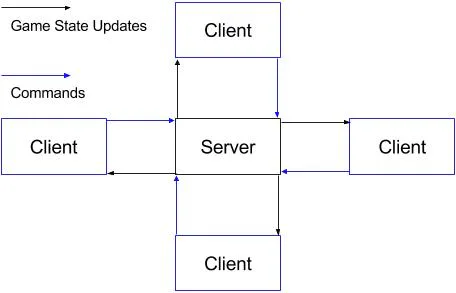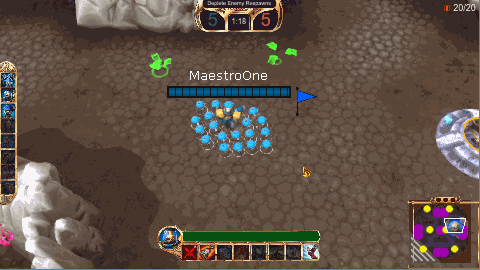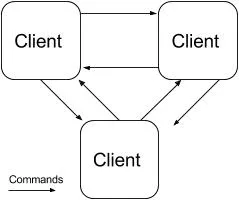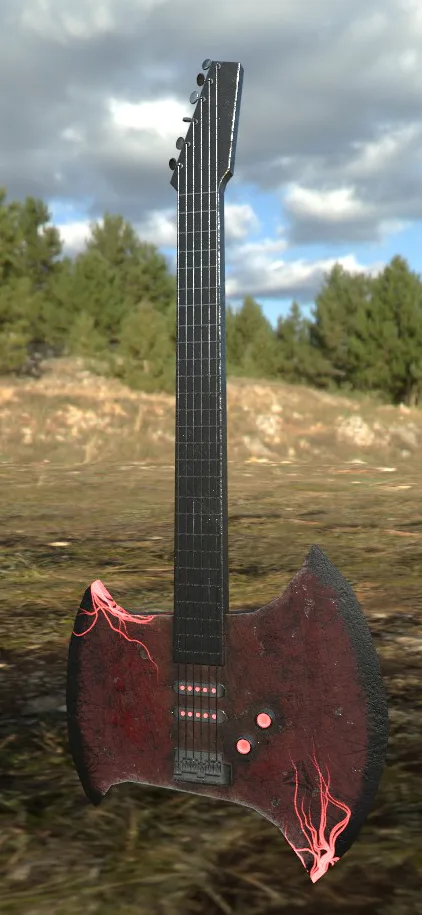Part 1: A Survey of Game Network Models
(Skip to Part 2 for our choice & implementation)
My name is Dru, and I’m one of the guys working to bring The Maestros to you fine folks. If you’re not in the know, The Maestros is a team-based RTS game that allows you to transform your units on the fly. Recently, we’ve talked about how we produce the game, and how we make environment art, but today we’re going to nerd out on some tech. Specifically, how networked multiplayer works in The Maestros.
Networking in Unreal
As you might guess, Unreal Engine (both 3 & 4) is structured around the core elements needed to build Unreal Tournament (though I’m sure their marketing department would contest me on that one). As a result, it makes a few assumptions in things like it’s default networking model. The Unreal Engine’s default network model is a client-server model that shares many core elements with the The TRIBES Engine Networking Model. This is still the white paper on writing networked multiplayer games, so if you’re making your first multiplayer game, I highly recommend reading it.

It works like this: players send commands to a central server who makes authoritative decisions on the state of the game and publishes it to the players at frequent intervals. It excels at providing up-to-the-millisecond info on all the players in the world through through high-frequency (>=20/second) messages about everybody status, and some prediction to fill the gaps. The longer you wait between messages, either due to tick-rate or latency, the more likely it is that prediction is wrong. You might have moved left instead of continuing straight in that time, and then the server has to correct your client. This is where “rubber-banding” comes from.
Server Update Rate of 10/s on Maestros - note the hitching/rubber-banding

Server Update Rate of 30/s on Maestros - pretty smooth

This is why you don’t want to play Halo from New York with somebody in Hong Kong, for instance. Somebody is going to have a bad time.
Where the Unreal (or Tribes) model starts to break down is when the number of characters starts to get really large because the amount of data you need to send starts to exceed what a common player’s internet connection can reliably transfer. Because of this, many classic RTS games with hundreds of units like, Starcraft, Age of Empires, Warcraft, Total Annihilation, etc. take a different approach.
Networking in Classic RTS Games
Instead of one authoritative server, these classic RTS games use a peer-to-peer model where every player sends their commands to every other player. In some ways, this is really cool - you don’t need any dedicated servers because the player’s computers make up the game. Unfortunately, player’s computers can vary widely in power and connection speed, and without a central authority, they all need to operate at the same pace. This means the player with the worst latency to any other player, dictates the game’s responsiveness for every other player.

In peer-to-peer, players will also be initiating connections directly to one another, something that home firewalls are specifically built to stop. In this situation, workarounds like port forwarding or NAT punchthrough become necessary. If you’ve ever played Starcraft: Brood War and you couldn’t join a friend’s lobby, so you made your own lobby, had them try to join, and then had that friend host again you were essentially performing a manual NAT punchthrough. These days, Age of Empires II HD uses a proxy to resolve this problem, but that also increases latency.
As you can see in the model above, only commands are ever sent over the wire, no game states. In this peer to peer model, the game state is maintained by simulating the game identically across every machine i.e. it must have determinism. This model for multiplayer games is known as Deterministic Lockstep, and is described beautifully in 1500 Archers on a 28.8: Network Programming in Age of Empires and Beyond (again, this is a little piece of internet gold, highly recommended).
In Deterministic Lockstep, players have to execute every other player’s commands at the same point in the simulation on every machine or else the simulations will start to diverge. This means every client has to wait until they have the commands from every other client in order to execute them - talk about input lag. Fortunately for Real Time Strategy games, issuing a command and then having a unit execute it tens or even a couple hundred milliseconds later doesn’t break the game feel, because it’s an indirect action. You aren’t your marine, and your brain makes sense of the fact that it’ll take a moment for him to react to your order. In Unreal Tournament however, you ARE your character, and it would feel completely broken if you took 200ms to react to you dodging left.










0 comments